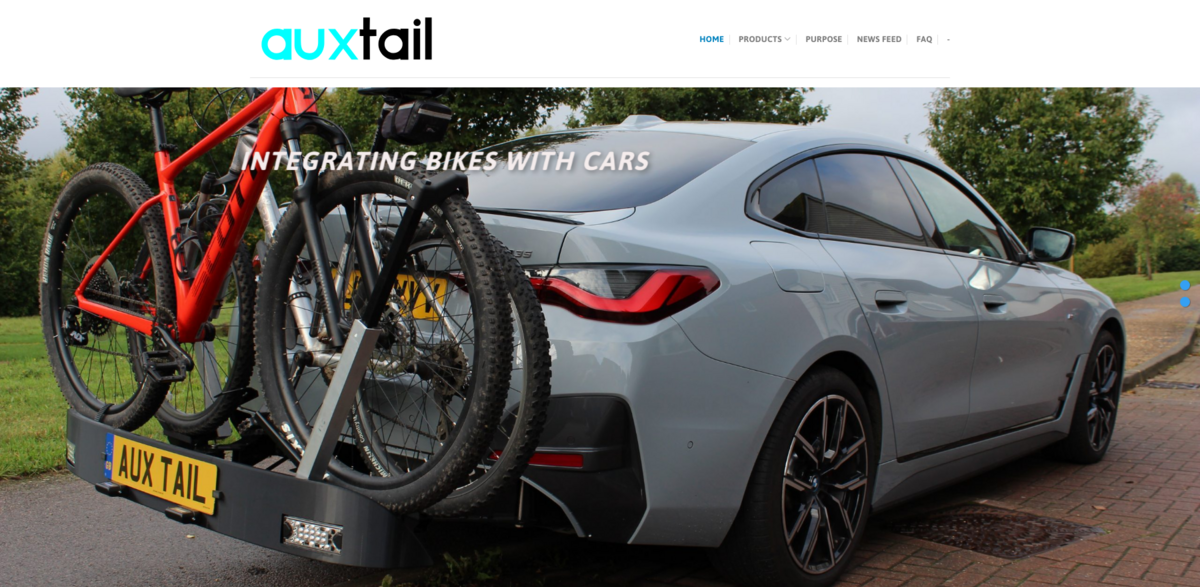Project Overview: Integrating Bikes with Cars
A revolutionary approach to transportation has emerged with a system that integrates bikes with cars – a perfect blend for bimodal commuting. The system is designed to simplify e-bike use, even when frames are too bulbous to be secured by traditional clamps. Engineered to fold neatly into the rear bumper, this bike rack measures only 130mm high and 250mm deep when closed, maintaining the vehicle’s ground clearance without any rear protrusion. This product is based on a granted patent technology with additional patents in process, showcasing robust innovation in rear carrying systems for cars. The idea of combining cycling and driving brings efficiency for urban commuting and longer journeys alike – and it is exactly the kind of functional and forward-thinking solution that modern transportation demands.
Main Benefit: Simplified and Safe Bike Carrying System
- 130mm high and 250mm deep folded dimensions ensuring a compact profile.
- Double locking and dual load paths designed to mitigate catastrophic failure.
- Two release catches and rearward pull allowing automatic engagement of the latches when fully deployed.
- Option to expand from a 2-bike to a 4-bike configuration using two extension pieces (each bike weighing approximately 15Kg).
- Towbar fixing points secure the rack to the vehicle just like a towbar setup.
Design and Engineering Excellence
Engineered for simplicity and inherent safety, the system truly stands out. The development team employed a design that includes release catches which, with a simple pull rearwards, sets off two latches that automatically engage, ensuring safe deployment and storage. This attention to the mechanical details – such as the double locking feature and dual load paths – minimizes the risk of catastrophic failure. Even the process of folding away has been carefully designed: the rack, only 13cm tall and 25cm deep when closed, neatly fits into the rear bumper where the exhaust used to be, and the license plate can be easily removed. The particular care in ensuring electrical compatibility, carried over from towbar trailer and bike rack suppliers, further strengthens the product’s reliability.
Functionality and Ease of Use
The system is all about simplicity and speed in operation. Users simply lift the arms – and they stop, preventing the wheel traps from shifting unnecessarily – and then press a button which extends the arms, making the rack ready to accept bikes. This straightforward procedure means that transitioning from driving to cycling is almost effortless… there’s no need to struggle with complicated setups. The strategy behind the design ensures that even during fast transitions, the benefits of cycling and driving can be combined seamlessly. Besides offering a fast and robust solution for bike carrying, this system honors legal compliance through its visible lights and numberplate, making it an all-in-one solution for both urban efficiency and safety.
Practical Integration for Modern Vehicles
The bike rack’s practical design ensures effortless integration with modern vehicles. The unit uses towbar fixing points to attach securely to the car in exactly the same manner as a conventional towbar, which means that adaptation by users is intuitive, even for those who already have an established routine with towing accessories. The electronic system and subtle design interface with existing vehicle components – like the license plate and lighting – to ensure that the vehicle remains legally compliant and fully functional. In a world where technology is increasingly about integration, this system fits right in with today’s vehicles and paves the way for broader usage across Battery Electric Vehicles.
Innovative Extensions and Adaptability
Beyond the core functionality, the product offers significant versatility. With an easy-to-install 4-bike extension kit that adds two attachment pieces, the system expands from supporting two mechanical bikes to accommodating four, each weighing 15Kg. This feature allows for flexible usage depending on the day’s needs – from carrying an extra bike for leisure activities to supporting more robust travel requirements. Additionally, the option of a BMW i4 rack, which is currently on test and will be launched via a crowdfunding campaign, opens doors to collaborations with premium automotive brands, further emphasizing the system’s high level of innovation and adaptability. The potential for future upgrades and enhancements keeps the product on the cutting edge of eco-friendly transportation solutions.
Project Impact: Contribution to Sustainable Mobility
- SDG 11: Sustainable Cities and Communities – Enhancing urban mobility by combining fast cycling with efficient driving.
- SDG 9: Industry, Innovation, and Infrastructure – Pioneering integration with patented technology that reshapes vehicular accessory design.
- SDG 13: Climate Action – Encouraging reduced emissions by promoting cycling in cities while maintaining driving convenience for longer trips.
- SDG 3: Good Health and Well-being – Supporting active lifestyles, as cycling is one of the fastest and most efficient modes of urban transport.
Market Relevance and Future Prospects
In a market where efficiency and sustainability are increasingly prioritized, the integration of bikes with cars offers a much-needed solution for overcoming the limitations of external load carrying in Battery Electric Vehicles. There is clear evidence that cycling is the fastest and most efficient mode of transport within cities, while driving remains the leading option when traveling longer distances outside urban areas. By allowing rapid transitions from car to bike, the system contributes to a cleaner, more efficient urban landscape – a key factor in addressing environmental challenges. Notably, the product recently made waves in the news with events such as Micromobility 2025 at the University of Warwick and a successful build presentation at Micromobility UK on September 17th and 18th. These events signify the growing market relevance and future prospects of the system, ensuring that it remains at the forefront of sustainable mobility innovation. The combination of robust engineering, a user-friendly interface, and adaptable design ensures that this integration solution isn’t just a fleeting trend – it is a stride toward a more sustainable, efficient, and flexible future in transportation.





















